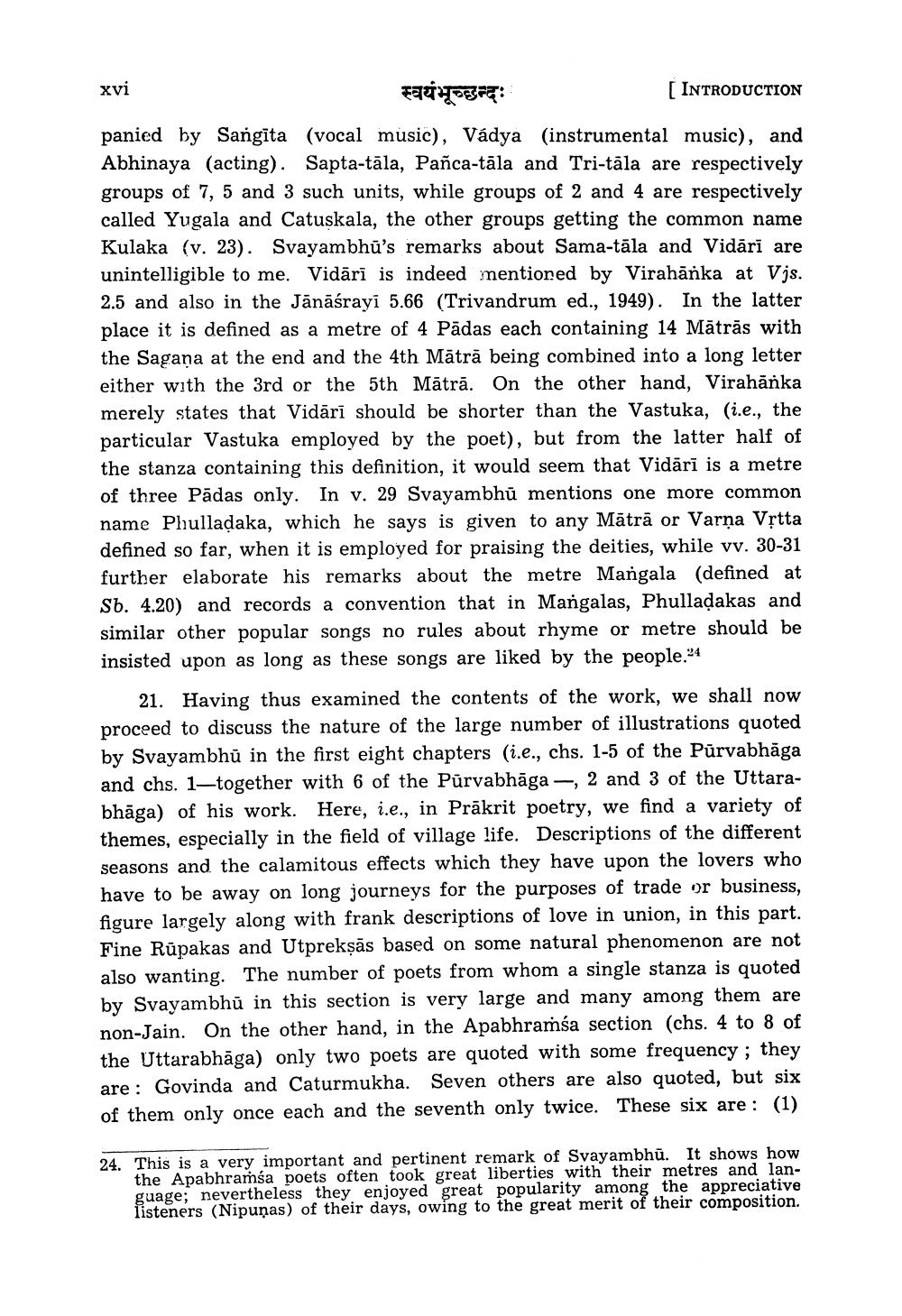________________
xvi
स्वयंभूच्छन्दः
[INTRODUCTION panied by Sangita (vocal music), Vádya (instrumental music), and Abhinaya (acting). Sapta-tāla, Pañca-tāla and Tri-tāla are respectively groups of 7, 5 and 3 such units, while groups of 2 and 4 are respectively called Yugala and Catuskala, the other groups getting the common name Kulaka (v. 23). Svayambhu's remarks about Sama-tāla and Vidāri are unintelligible to me. Vidārī is indeed mentioned by Virahanka at Vjs. 2.5 and also in the Jānāśrayi 5.66 (Trivandrum ed., 1949). In the latter place it is defined as a metre of 4 Pādas each containing 14 Mātrās with the Sagana at the end and the 4th Mātrā being combined into a long letter either with the 3rd or the 5th Mātrā. On the other hand, Virahanka merely states that Vidāri should be shorter than the Vastuka, (i.e., the particular Vastuka employed by the poet), but from the latter half of the stanza containing this definition, it would seem that Vidārī is a metre of three Pādas only. In v. 29 Svayambhū mentions one more common name Phulladaka, which he says is given to any Mātrā or Varna Vrtta defined so far, when it is employed for praising the deities, while vv. 30-31 further elaborate his remarks about the metre Mangala (defined at Sb. 4.20) and records a convention that in Mangalas, Phulladakas and similar other popular songs no rules about rhyme or metre should be insisted upon as long as these songs are liked by the people.24
21. Having thus examined the contents of the work, we shall now proceed to discuss the nature of the large number of illustrations quoted by Svayambhū in the first eight chapters (i.e., chs. 1-5 of the Pūrvabhāga and chs. 1-together with 6 of the Pūrvabhāga, 2 and 3 of the Uttarabhāga) of his work. Here, i.e., in Prākrit poetry, we find a variety of themes, especially in the field of village life. Descriptions of the different seasons and the calamitous effects which they have upon the lovers who have to be away on long journeys for the purposes of trade or business, figure largely along with frank descriptions of love in union, in this part. Fine Rūpakas and Utprekṣās based on some natural phenomenon are not also wanting. The number of poets from whom a single stanza is quoted by Svayambhū in this section is very large and many among them are non-Jain. On the other hand, in the Apabhramsa section (chs. 4 to 8 of the Uttarabhāga) only two poets are quoted with some frequency; they are : Govinda and Caturmukha. Seven others are also quoted, but six of them only once each and the seventh only twice. These six are: (1)
24. This is a very important and pertinent remark of Svayambhū. It shows how
the Apabhramsa poets often took great liberties with their metres and language; nevertheless they enjoyed great popularity among the appreciative listeners (Nipunas) of their days, owing to the great merit of their composition.




